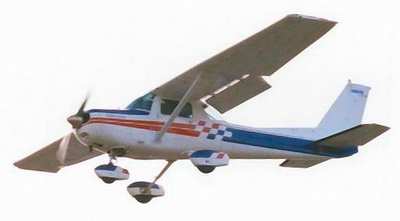Thu, Mar 17, 2016
Faulty Navigation Equipment And Limited Visual Reference Led To Fatal Cessna 150 Accident
In its investigation report (A14O0217), the Transportation Safety Board of Canada (TSB) determined that a faulty navigation receiver and difficulty holding aircraft heading while flying in conditions of limited visual reference, led the pilot of an aircraft to become lost, and eventually collide with terrain near Whitney, Ontario. Both occupants were fatally injured.

On 11 November 2014, at 1803 Eastern Standard Time, a Cessna 150M with two people on board departed from the Ottawa/Rockcliffe Airport under night visual flight rules for a flight to the Toronto Buttonville Municipal Airport. At 2025, the pilot transmitted a mayday indicating that he was lost and that the aircraft was low on fuel. The aircraft was below radar coverage, and air traffic control (ATC) attempted to assist the aircraft in locating a suitable aerodrome. At 2127, the pilot made a final radio transmission, and the aircraft crashed shortly thereafter.
The investigation determined that the aircraft was being operated in darkness, below a layer of clouds with limited visual reference, and over an area with few ground lights. The pilot was navigating by relying solely on aircraft heading and the information provided by an onboard navigation instrument (VHF omnidirectional range (VOR) receiver). A component within the receiver had deteriorated and was overheating, causing it to periodically display incorrect information. The pilot relayed this incorrect location information to ATC, rendering ATC assistance ineffective. Further, because the pilot was uncertain of the amount of fuel remaining in the aircraft, ATC attempted to route the aircraft to the perceived nearest airport with runway lighting rather than to one slightly more distant in a better lit, more populated area.
Shortly before the accident, the pilot entered a shallow descent, possibly in an effort to maintain visual flight in deteriorating weather, and as a result, the aircraft struck a heavily treed area.
(Source: TSB news release. Image from file. Not accident airplane)
More News
“Honored to accept this mission. Time to take over space. Let’s launch.” Source: SecTrans Sean Duffy commenting after President Donald Trump appointed U.S. Secret>[...]
Permanent Echo Radar signals reflected from fixed objects on the earth's surface; e.g., buildings, towers, terrain. Permanent echoes are distinguished from “ground clutter&rd>[...]
Aero Linx: European Hang Gliding and Paragliding Union (EHPU) The general aim of the EHPU is to promote and protect hang gliding and paragliding in Europe. In order to achieve this>[...]
Glider Encountered A Loss Of Lift And There Was Not Sufficient Altitude To Reach The Airport Analysis: The flight instructor reported that while turning final, the glider encounter>[...]
Airplane Climbed To 100 Ft Above Ground Level, At Which Time The Airplane Experienced A Total Loss Of Engine Power On May 24, 2025, at 1300 eastern daylight time, an Aeronca 7AC, N>[...]
 Aero-News: Quote of the Day (07.11.25)
Aero-News: Quote of the Day (07.11.25) ANN's Daily Aero-Term (07.11.25): Permanent Echo
ANN's Daily Aero-Term (07.11.25): Permanent Echo ANN's Daily Aero-Linx (07.11.25)
ANN's Daily Aero-Linx (07.11.25) NTSB Final Report: Schweizer SGS 2-33A
NTSB Final Report: Schweizer SGS 2-33A NTSB Prelim: Aeronca 7AC
NTSB Prelim: Aeronca 7AC



